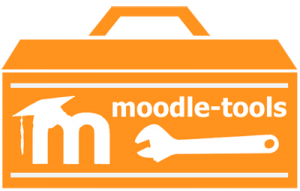Platform Evaluation Report
Platform Evaluation – ETEC 565A-66B
Observations and Reflections
Revisiting Moodle
Evaluating Moodle for Assignment 1 felt very much like visiting an old friend. But this time, I got to know Moodle better than before. Back in 2011, it became mandatory that courses and modules that were offered on Blackboard had to migrate to the Moodle platform at the University of Alberta where I worked. The move for me was quite quick and painless but I knew I had not exploited the full potential of the Moodle tools. Evaluating Moodle using Bates’ (2015) SECTIONS framework solidified my appreciation for this open source LMS. I like that it is community driven and community serving. Its social constructivist pedagogical and philosophical underpinnings and scalable functionalities also resonate with me. To provide an objective evaluation, however, I had to address not just its affordances, but its limitations as well. The hidden costs, for instance. It really depends on how much customization an institution wants. Using an open source software also means that staff have to be ready to get under the hood to fix things when issues crop up.
Readings and Research
I referred often to the materials in Units 1 and 2. I found Bates highly readable because he addresses his readers in a conversational, non-patronizing manner. Using my library research skills, I tracked down a number of peer-reviewed journal articles detailing comparative studies of LMS and blog posts about industry trends. There wasn’t a lot of evaluation models on the subject and I found Bates’ SECTIONS model to be more helpful than other frameworks.
Adoption of LMS at Post-Secondary Institutions
This assignment helped to inform my thinking of the complexities and risks associated with migrating to a new LMS and the drivers behind LMS adoption by universities which face competitive pressures to run their courses in cost-effective ways. As we just learned this past week in the Benoit case study, repurposing content for online learning is not as easy and straightforward as simply dumping the existing material on the LMS. I learned to consider the technical and managerial issues of migration undertaken by various post-secondary institutions. Some had turned to Moodle as an alternative because they were leery of what was perceived to be Blackboard’s dominance and overly aggressive business tactics.
Pedagogically Restricting Feature of Blackboard
Overall, I found this learning experience stimulating and at times challenging as we had left significant gaps in our discussions that had to be addressed after we had gone further along in the project. If a respectful rant may be permitted, I’d found the Blackboard platform counter-intuitive and the first-hand experience of using the ‘blind’ project signup tool unsatisfactory, to say the least. Coates, James & Baldwin (2005) were absolutely right when they said that technologies are not pedagogically neutral. All that being said, I’m really looking forward to getting my feet wet in the real design work with my newly formed group for Assignment 2 & 3!
References
Bates, A. W. (2015). Teaching in a digital age. Retrieved from http://opentextbc.ca/teachinginadigitalage/part/chapter-7-moocs/
Coates, H., James, R., & Baldwin, G. (2005). A critical examination of the effects of learning management systems on university teaching and learning. Tertiary Education & Management, 11(1), 19-36.
